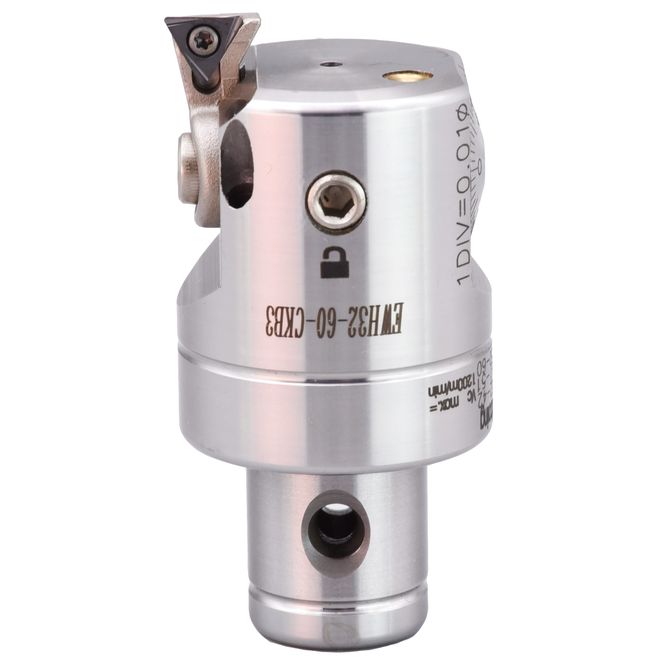Fine Boring Tool: Precision at Its Best
2025-04-17
In the world of manufacturing and machining, precision is key. Whether you’re working with metal, wood, or any other material, achieving tight tolerances and smooth finishes is often a requirement. One tool that has become indispensable in the pursuit of accuracy and perfection is the fine boring tool. These tools are crucial in applications where small adjustments and precise holes are needed, making them an essential piece of equipment in the machining industry.
What is a Fine Boring Tool?
A fine boring tool is a precision tool used for enlarging and refining holes in materials. It is an advanced version of the traditional boring tool, designed for applications that demand higher precision, better surface finishes, and finer tolerances. Unlike regular boring tools, which are typically used for general hole drilling, fine boring tools are used to achieve a high level of accuracy and to correct any imperfections in the bore.
These tools are commonly used in industries such as automotive, aerospace, and heavy machinery, where tight tolerances and high-quality finishes are crucial.
How Does a Fine Boring Tool Work?
The working principle of a fine boring tool revolves around precision cutting and fine adjustment. Fine boring tools consist of a rotating cutting head with multiple inserts that can be adjusted to control the size of the hole being bored. Here's how the process works:
1. Preparation: A pre-drilled hole is created in the workpiece. This hole is usually larger than the desired size, as the fine boring tool will be used to refine and adjust it to the exact measurements required.
2. Adjustment: The fine boring tool allows for fine adjustments to the cutting inserts, which helps in gradually enlarging the hole to the exact diameter. This step ensures that the hole is produced with a high level of accuracy.
3. Boring: As the tool rotates within the hole, the cutting edges remove material from the workpiece in small, controlled increments. This process ensures that the hole is smooth and the desired diameter is achieved.
4. Surface Finish: One of the key advantages of fine boring tools is their ability to provide a high-quality surface finish. The precise cutting action of the tool minimizes the need for further finishing operations, such as grinding or polishing.
Key Features of Fine Boring Tools
To achieve the high level of precision that fine boring tools are known for, several features distinguish them from other boring tools:
1. Adjustability: Fine boring tools come with adjustable inserts or cutting heads. These can be precisely calibrated to control the size and geometry of the hole being bored, allowing for tight tolerances.
2. Multiple Cutting Edges: Unlike single-point cutting tools, fine boring tools often have multiple cutting edges that work simultaneously. This helps distribute the cutting force evenly, reducing wear on individual inserts and ensuring a smoother finish.
3. Precision Inserts: The cutting inserts used in fine boring tools are made from high-quality, wear-resistant materials such as carbide or ceramic. These materials ensure that the tool can withstand the demands of high-precision machining while maintaining sharpness over time.
4. Versatility: Fine boring tools are versatile and can be used in a wide range of materials, including metals, plastics, and composites. Their ability to perform accurate and smooth boring operations makes them ideal for both small and large-scale production runs.
Applications of Fine Boring Tools
Fine boring tools are used in various industries where precision is paramount. Some of the most common applications include:
- Automotive Industry: In the automotive sector, fine boring tools are used to create precise holes in engine blocks, transmission components, and other critical parts. These tools ensure that engine components fit together perfectly, enhancing performance and durability.
- Aerospace: In aerospace manufacturing, the need for precision is even more critical. Fine boring tools are used to create exacting hole dimensions in turbine engines, landing gear, and other vital aircraft components.
- Heavy Machinery: In the production of heavy machinery, such as pumps, gears, and shafts, fine boring tools are employed to create highly accurate holes and bores that contribute to the machinery’s overall efficiency and performance.
- Medical Devices: Fine boring tools are also used in the production of medical devices that require extremely precise holes, such as implants or surgical instruments, where accuracy can directly affect functionality and patient safety.
Benefits of Fine Boring Tools
The use of fine boring tools offers several benefits in the machining process, including:
1. High Precision: Fine boring tools provide unparalleled accuracy in hole diameter and surface finish. This allows manufacturers to meet tight tolerances without the need for additional finishing steps.
2. Improved Surface Finish: The smooth cutting action of fine boring tools minimizes burrs and rough surfaces, resulting in a smoother and more polished finish.
3. Reduced Setup Time: Fine boring tools allow for quick adjustments to the cutting inserts, reducing the time spent on tool changes and setup between different jobs.
4. Cost-Effective: While fine boring tools may initially seem more expensive, their ability to create precise holes and finishes without requiring additional operations can save both time and money in the long run.
Conclusion
Fine boring tools are a critical component in the world of precision machining. Their ability to refine holes with high accuracy and produce excellent surface finishes makes them indispensable in industries that demand the utmost in quality and performance. Whether you’re working on automotive parts, aerospace components, or any other high-precision application, the fine boring tool ensures that your workpiece is up to the task.
By investing in high-quality fine boring tools and utilizing them correctly, manufacturers can achieve superior results that meet or exceed industry standards, all while minimizing waste and optimizing production efficiency.



